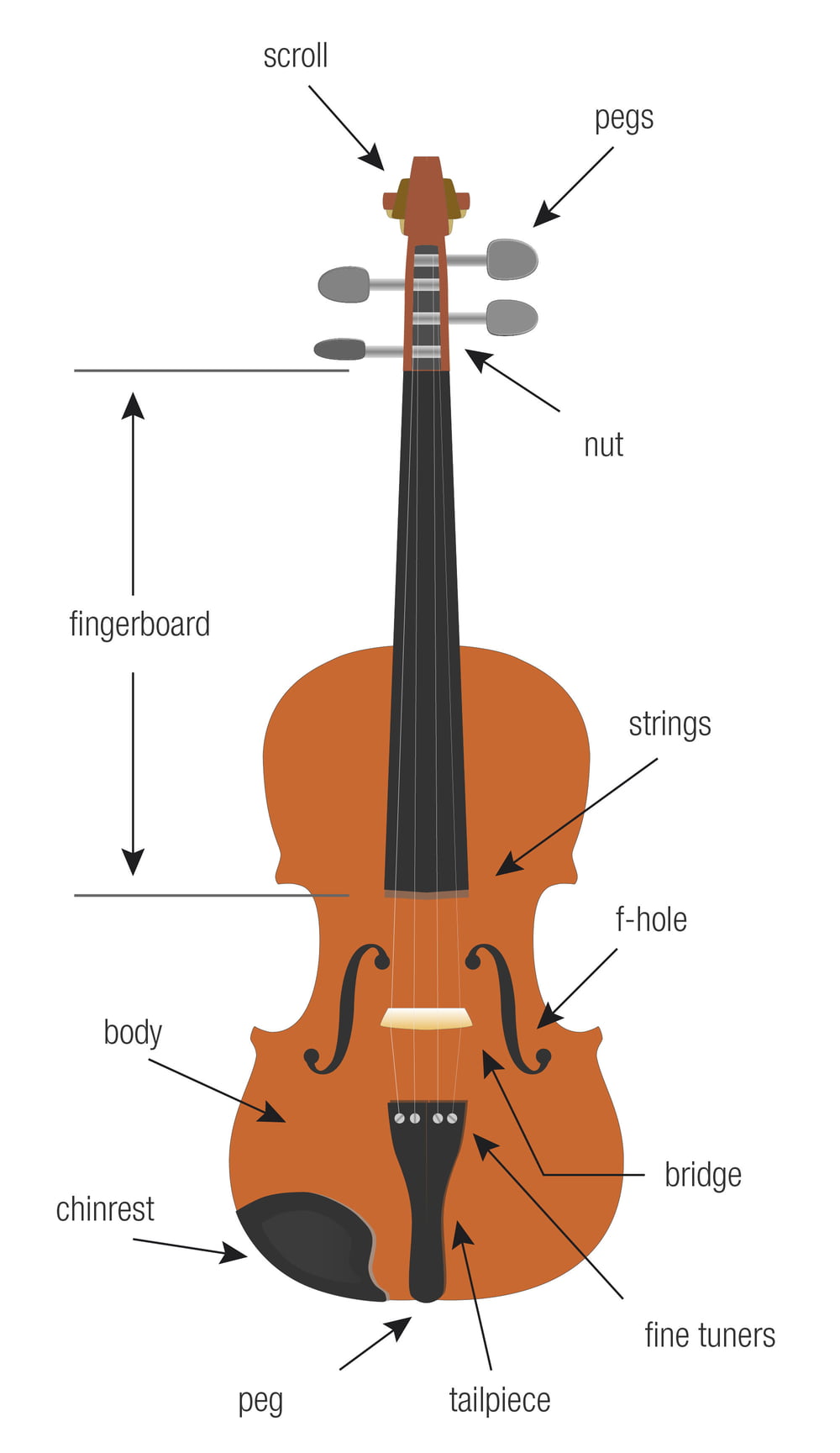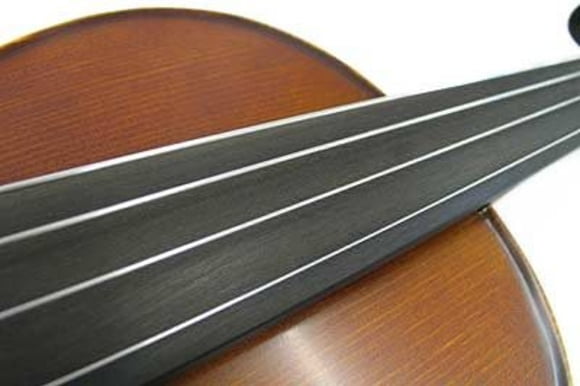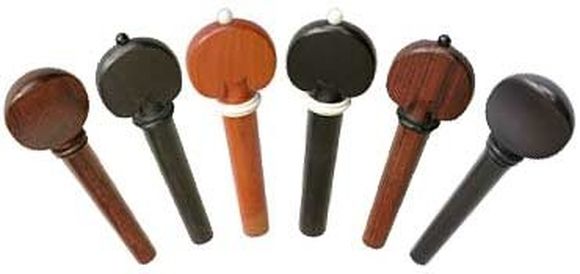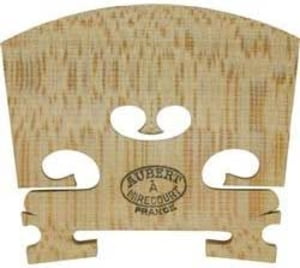3. Materials & Components
Body
The top, or belly is made of spruce, a timber of plain, straight grain, while the ribs and back are invariably made of maple, often spectacularly figured. The back can be formed from either a single piece of timber, or two joined down the middle. While two-piece backs are a good excuse for further displays of virtuoso joinery, they do not, as is often assumed, signify a finer instrument, but are merely a matter of taste on the part of the maker. Violas by the legendary Stradivarius family can be found with either one or two-piece backs, and they all sell for well in excess of £1,000,000.
Fingerboard
The only other permanent external fixture is the fingerboard, which is made of ebony. Ebony is an extraordinarily heavy, dense timber - drop a piece into water and it will actually sink. The best ebony, after long seasoning in the sun, is a startling blue-black colour, and is used for the fingerboard because it is one of the few woods hard enough to cope with the wear that this part of the instrument is subjected to.
Most of the other parts of the instrument are essentially detachable, though the dismantling of some of them by the novice has the undesirable potential to end in tears! The sort of work that can be undertaken by beginners and students is outlined in the Maintenance & Cleaning section below.
Pegs, Tailpiece & Chin Rest
Ebony is also often used for the pegs, the tailpiece, the endpin and the chin rest. While this can lend a degree of visual co-ordination to the completed instrument, other woods can also be used to great effect. Many violas have pegs and tailpieces of maple or rosewood (which despite its name, has nothing to do with roses, but much to do with the fact that certain genera have a distinctively sweet smell), while the somewhat politically incorrect ivory makes an occasional appearance on older, grander instruments.
Bridge
The bridge, despite its small size, has a crucial role to play in what makes a particular viola sound the way it does. Minute differences in the thickness, shaping and exact positioning can have dramatic effects on the voicing of an instrument. Made of a specific type of maple and cut from the timber in a particular way, its design - like many of the more apparently decorative parts of stringed instruments - is the result of years of trial and error on the part of makers, and is largely functional.
Soundpost
Like the bridge, the soundpost needs to be positioned with great care to ensure the instrument sounds its best a job that should be done by an expert using a special tool designed for the purpose. The tiniest adjustments to its placing have a major effect on the way the instrument speaks and the balance of the four strings. Very roughly, it stands close to the right foot of the bridge to share the tension of the strings between the back and belly of the instrument, and to stop the bridge from crashing through! Remember, if you completely slacken or remove all four strings at the same time, it is very likely (without the considerable pressure of the bridge bearing down on it) that the sound post will fall over. Should this happen, do not, under any circumstances re-tighten the strings the potential consequences are obvious and repair will be expensive! Instead, take the instrument to a repairer to have the sound post re-fitted - a very much cheaper alternative. The situation is best avoided in the first place by making sure that at least two strings remain taught at all times.
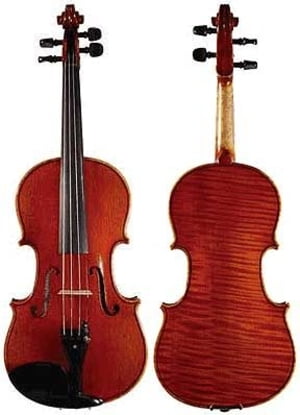
Viola with one piece back


